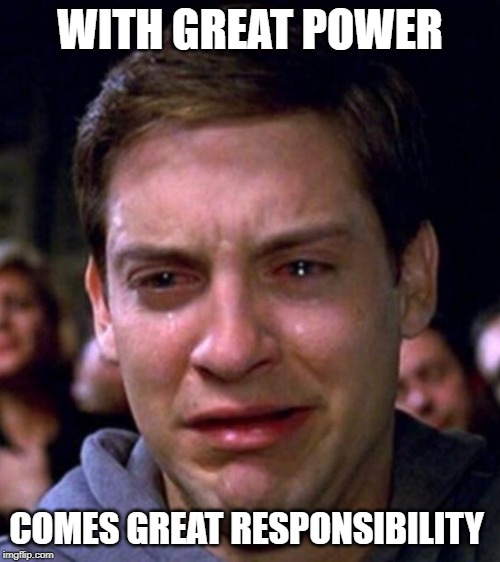Imagine this: it’s raining heavily and you’re walking on the concrete path that leads to your condo’s elevators.
Suddenly, you find yourself slipping and you try to break your fall but end up with a broken wrist!
Looking at the pathway, you notice that there’s plenty of moss growing all over it, and numerous large cracks too.

If you’re furious and wonder if it’s your fault for not being careful, hold it right there!
You see, you and everyone else have been paying the maintenance fees and sinking funds, surely the management would have used the money to ensure the building and facilities are safe for living conditions?
Unfortunately, this is quite a common scenario in Malaysia. Residents may complain all they want to the condo management, but they’ll find that nothing changes.
There will still be major repairs not carried out and the entire condo will remain the most run-down one in the area.
So, what exactly are these maintenance fees and sinking funds that you’re paying for?
- Maintenance fees: Used to cover the costs of providing relevant services for maintaining the facilities. Some of these include electricity and water in common areas, as well as upkeep for the swimming pool, gym, and outdoor grounds.
- Sinking funds: Used to cover long-term structural costs (that are generally less predictable and on the pricier side) such as painting the whole condo building or replacing the rooftop water tank which has a major leakage.
What’s the condo management supposed to do with all that money then?

Well, to put it simply, they’re supposed to use the funds to keep the ENTIRE condo in tip-top shape – good condition, safe, and livable.
There’s actually a law that you can refer to: The Strata Management Act 2013 (SMA 2013). It lists out all the management duties related to condos, apartments, flats as well as gated and guarded communities.
Specifically, under Section 21 (1) of the SMA 2013 is where you’ll find the responsibilities of a condo’s management. Some of these include:
- Properly maintaining and managing the building to keep it in a state of good and serviceable repairs;
- Determining and imposing the maintenance fee and sinking fund;
- To do other necessary things for the proper maintenance and management of the building and the common areas.
Now, if you’re thinking that you can escape paying the maintenance fee and sinking fund, you might want to think again.
According to Section 25 (1) of the same Act, you’re legally bound to pay up and if you don’t do so, the condo management is allowed to sue you!

So how exactly should the monthly payments be used then?
To start off, your condo management is supposed to create separate accounts for both types of payment.
Each account is to be used for specific purposes only. First, we’ll look at what the maintenance fees should be covering (since the list is too long, we’ve taken out the main ones):
- Maintaining the common property in good condition on a day-to-day basis;
- Paying for the expenses incurred in providing cleaning services for the common property, security services and amenities for the occupiers of the building;
- Minor painting works on the premises of the common building;
- Carrying out inspection of all electrical wiring systems of the common property and replacing or repairing any faulty wiring systems (if any);
- Carrying out inspection, maintenance and repair of the main water tanks.
Next, we move on to what the sinking fund should be covering (which is a surprisingly short and to-the-point list):
- The painting or repainting of any part of the common property;
- The acquisition of any movable property for use in relation to the common property;
- The renewal or replacement of any fixture or fitting comprised in any common property;
- The upgrading and refurbishment of the common property.

The term ‘common property’ refers to the areas that are shared by all the residents of the condo such as the elevators, carpark and yes, the walkways.
So, if the money from those 2 accounts are used for literally anything else, that’s considered a misuse of funds and is punishable with a hefty fine, jail time, or both!
Did you know that apart from complaining, you can sue the condo management?
Yep, you read that right! If the condo management can sue you if you fail to pay the monthly dues, you can sue them back too for failing to perform their duties.
Even the law says so; just check out Section 17 (3) and Section 59 (1), both in the SMA 2013:
The joint management body/management corporation can sue and can be sued
But before you rejoice and rush off to hire a lawyer, you need to know just exactly WHO it is that you’ll be targeting.
You see, there are actually layers in the condo’s management body, but there are only 2 that you need to pay special attention to:
- Joint Management Body (JMB): This is a temporary body that will only exist as long as the strata titles haven’t been transferred to the homebuyers. Once that process is settled, the JMB will cease to exist, and make way for the MC.
- Management Corporation (MC): This is the body that takes over once the process of strata titles transfer is done, and they have the exact same duties as the JMB.
Basically, who you can sue would all depend on whether you’ve received the title to your property or not. So, what about that condo management team?
Well, they’ve been placed there by the JMB/MC to carry out their duties on their behalf and that’s about it; don’t shoot the messenger!

It’s also important to note that the decision to go to court should only be your last resort.
You can first turn to the Strata Management Tribunal, where they’ll hear out disputes involving tenants who don’t pay their monthly dues or management teams who don’t perform their duties.
You can find a detailed list of the types of disputes that the Tribunal will hear in Schedule 4 of SMA 2013.
Finally, there are 3 conditions which you need to meet beforehand:
- Your claims brought before the Tribunal cannot exceed RM250,000.
- You can approach the Tribunal if you have not taken that particular claim to them before.
- You can still approach the Tribunal with the same claim if it has been struck out by them previously or was withdrawn.
At the end of the day, you can’t blame your condo management all the time!
If you’ve read this far, yay! But after all that has been said, you need to remember that the condo management isn’t 100% responsible for anything that goes wrong in your life.
If you find that your toilet bowl isn’t working, that’s on you to repair it. If you don’t like the colour of the condo’s exterior walls, that’s too bad but you need to learn to live with it, or find a new condo!
Source: AskLegal
Disclaimer: The information is provided for general information only. PropertyGuru International (Malaysia) Sdn Bhd makes no representations or warranties in relation to the information, including but not limited to any representation or warranty as to the fitness for any particular purpose of the information to the fullest extent permitted by law. While every effort has been made to ensure that the information provided in this article is accurate, reliable, and complete as of the time of writing, the information provided in this article should not be relied upon to make any financial, investment, real estate or legal decisions. Additionally, the information should not substitute advice from a trained professional who can take into account your personal facts and circumstances, and we accept no liability if you use the information to form decisions.



